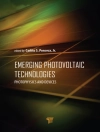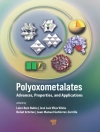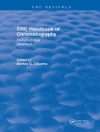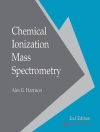Adopting an integrated approach, this book covers experiments, theory, and emerging applications.
In the first part surfaces are described that change from flat to either a random corrugated or to a well-structured structure, while the second part deals with those surface structures integrated in the coating surface where the structures change their shape or dimension when addressed by an external trigger. A variety of materials are addressed, including liquid crystal polymers, hydrogels, hard acrylates, and soft silicones. The whole is rounded off by a discussion of various applications, including surface controlled flows in microfluidic systems.
Of interest to chemists and engineers, researchers in industry and academia, as well as those working in the paint industry and hydrodynamics.
Daftar Isi
List of Contributors xi
Preface xv
1 Light-responsive Surface: Photodeformable Cross-linked Liquid-Crystalline Polymers Based on Photochemical Phase Transition 1
Lang Qin and Yanlei Yu
1.1 Introduction 1
1.2 Photochemical Phase Transition 2
1.3 Photodeformation 3
1.3.1 Photoinduced Contraction and Expansion 3
1.3.2 Photoinduced Bending Movements 4
1.3.3 Photoinduced Twisting Movements 10
1.4 Effect Factors of Photodeformation 13
1.5 Deformation Induced by Visible and NIR Light 18
1.6 Soft Actuators Based on CLCPs 22
1.6.1 Macro-scaled Actuators 22
1.6.2 Micro-scaled Actuators 23
1.7 Summary 28
References 30
2 Inkjet Printed Liquid Crystal Cilia 35
Casper L. van Oosten, Cees W.M. Bastiaansen, and Dirk J. Broer
2.1 Introduction 35
2.2 Thermal Actuation Based on Anisotropic Thermal Expansion 37
2.3 Light Stimulated Deformation 41
2.4 Inkjet Printing Actuators: Toward Polymer Cilia 44
2.5 Conclusion 53
Acknowledgment 53
References 53
3 Liquid Crystal Coatings Switched between Flat and Corrugated Surface Texture 57
Danqing Liu and Dirk J. Broer
3.1 Introduction 57
3.2 Liquid Crystal Networks 58
3.3 Thermal-Responsiveness 60
3.4 Photo-Responsive Liquid Crystal Networks 61
3.5 Photo-Induced Surface Deformation 62
3.6 Photo-Induced Surface Deformation Preset by Patterned Director Orientation 66
3.7 Mechanism of Surface Deformation 73
3.8 Conclusions 79
References 79
4 Computational Modeling of Light-triggered Topography Changes of Azobenzene-modified Liquid Crystal Polymer Coatings 85
Ling Liu and Patrick R. Onck
4.1 Introduction 85
4.2 Photo-mechanical Model 88
4.2.1 Light Penetration Model 88
4.2.2 Constitutive Equations 90
4.3 Results and Discussion 92
4.3.1 Light Penetration 93
4.3.2 Polydomain Coatings 94
4.3.3 Linearly Patterned Coatings 99
4.3.3.1 Effect of the In-plane Dimensions 101
4.3.3.2 Effect of Cholesteric Pitch Length 102
4.3.3.3 Effect of Transition Area 104
4.3.4 Fingerprint Coatings 105
4.3.5 Comparison and Discussion 110
4.4 Conclusions and Outlook 113
Acknowledgment 114
References 114
5 Dynamic Tribology in Liquid Crystal Coatings 123
Danqing Liu and Dirk J. Broer
5.1 Introduction 123
5.2 Dynamic Friction Analysis 124
5.2.1 Coating with a Fingerprint Texture 125
5.2.2 Coatings with a Polydomain Texture 126
5.2.3 Linear Protrusions 128
5.3 Static Friction Coefficients 132
5.4 Conclusions 133
References 134
6 Actuating Hydrogel Thin Films 137
Leonid Ionov
6.1 Introduction 137
6.2 Hydrogel Bilayer 138
6.3 Patterned Hydrogel Film 141
6.4 Bending of Complex Structures 142
6.5 Intrinsic Anisotropy 143
6.6 Applications of Hydrogel Actuators 145
6.6.1 Sensors 145
6.6.2 Smart Lenses 145
6.6.3 Imaging Devices 146
6.6.4 Switchable Coloration 146
6.6.5 Elements of Microfluidic Devices 147
6.6.6 Walkers and Swimmers 148
6.6.7 3D Microfabrication 150
6.6.8 Biomaterials 151
6.6.9 Stimuli-responsive Surfaces 151
6.7 Conclusions and Outlook 152
References 152
7 Photoresponsive Polymer Hydrogel Coatings that Change Topography 159
Jelle E. Stumpel, Jeroen ter Schiphorst, and Albertus P. H. J. Schenning
7.1 Introduction 159
7.2 Photoresponsive Polymer Hydrogel Coatings 160
7.2.1 Light Induced Heating 161
7.2.2 Photochromic Dyes 161
7.3 Photoresponsive Mixing and Flow Control in Microfluidic Devices 163
7.4 Photoresponsive Wettability 167
7.5 Photoresponsive Cell Adhesion 167
7.6 Conclusions and Perspectives 169
References 170
8 Electrically Responsive Fluoropolymer Surfaces and Devices 175
Hao Wu and Robert A. Hayes
8.1 Electrically Responsive Surfaces 175
8.1.1 The Effect of Gravity on Electrowetting Systems 177
8.1.2 Ideal and Non-ideal Electrowetting Behavior 178
8.2 Electrowetting Materials 179
8.2.1 Inorganic Insulators 181
8.2.2 Electrowetting with Oil 182
8.2.3 Processing on Top of the Fluoropolymer 183
8.3 Historical Development and Devices 186
8.4 Electrofluidic Arrays 187
8.5 Industrialization 188
8.6 Challenges and Conclusions 189
References 191
9 Functional Polymer Surfaces via Post-polymerization Modification 193
Wenwen Xue, Xiao-Lei Gong, and Patrick Theato
9.1 Introduction 193
9.2 Polymer Brushes 193
9.2.1 Activated Ester-amine 195
9.2.2 Thiol-based Reactions 199
9.2.3 Azide–Alkyne Cycloadditions 201
9.3 Reactive Polymer Layers 203
9.3.1 Overview of Coatings 203
9.3.2 Physisorption 203
9.3.3 Layer-by-Layer Self-Assembly 204
9.3.4 Lb L Assembly Based on Covalent-bonding 205
9.3.5 Electrochemical Polymerization 206
9.3.6 Self-Polymerization of Dopamine (PDOPA) 207
9.3.7 Au–S bond 208
9.3.8 Plasma Treatment 209
9.3.9 Other Methods 210
9.4 Concluding Remarks 211
References 211
10 Haptic Perception of Material Properties 225
Astrid M.L. Kappers and Wouter M. Bergmann Tiest
10.1 Introduction 225
10.2 Experimental Methods 225
10.2.1 Discrimination 226
10.2.2 Search Paradigm 226
10.2.3 Matching 227
10.2.4 Ordering and Sorting 227
10.3 Roughness 228
10.3.1 Sorting Experiment 228
10.3.2 Ordering Experiment 229
10.3.3 Two-dimensional Search 231
10.3.4 Three-dimensional Search 232
10.3.5 Hand Movements 233
10.3.6 Discrimination and Identification 234
10.3.7 Discussion 235
10.4 Compliance 236
10.4.1 Free Sorting 237
10.4.2 Discrimination 237
10.4.3 Matching 239
10.4.4 Two- and Three-dimensional Search 239
10.4.5 Hand Movements 241
10.4.6 Discussion 241
10.5 Temperature 242
10.5.1 Discrimination of Heat Flow 242
10.5.2 Discrimination of Thermal Diffusivity 243
10.5.3 Three-dimensional Search 244
10.5.4 Hand Movements 245
10.5.5 Discussion 246
References 247
Index 251
Tentang Penulis
Danqing Liu studied at the University of Electronic Science & Technology in Sichuan, China, where she received her bachelor’s degree in 2006. In 2008, she received her master’s degree in electronic engineering from Delft University of Technology, The Netherlands. Her Ph.D. study of responsive polymers was conducted at Eindhoven University of Technology, The Netherlands, where she graduated in 2013 and continued with a postdoctoral position with the focus on surface dynamics. Dr. Liu has around 20 publications in important peer reviewed journals and she is recipient of a Dutch national 4TU grant and Veni grant to proceed her research within the Netherlands.
Dirk J. Broer is a polymer chemist and specialized in polymer structuring and self-organizing polymer networks. He worked for more than 30 years at Philips Research in Eindhoven, The Netherlands. He was a senior research fellow and vice president at the Philips Research Laboratories specializing in biomedical devices and applications of polymeric materials. In parallel, he was appointed as part-time professor (1996) and as full professor (2010) at the Eindhoven University of Technology. He has authored more than 250 scientific publications and holds 120 patents. Furthermore, he is a member of the Royal Netherlands Academy of Arts and Sciences (KNAW).












